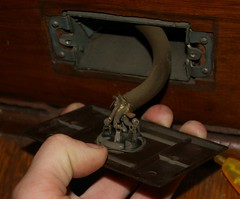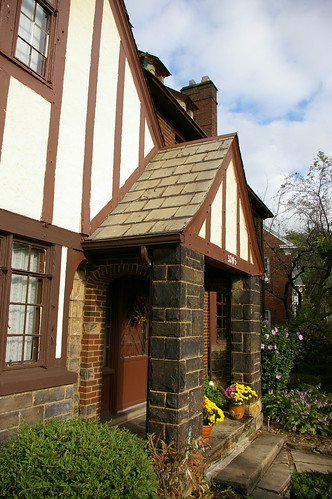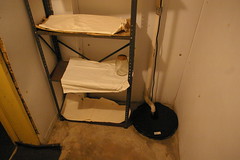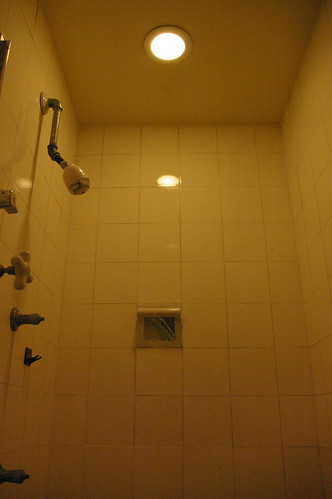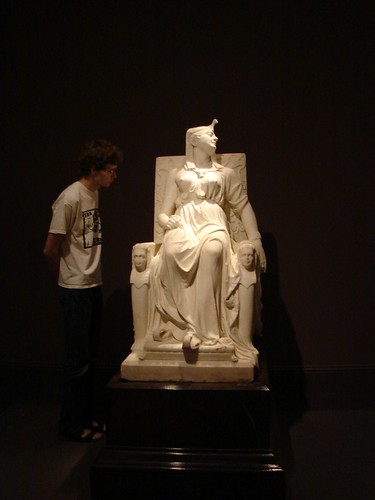(Not to be confused with the Electrical Outlet of Death™)
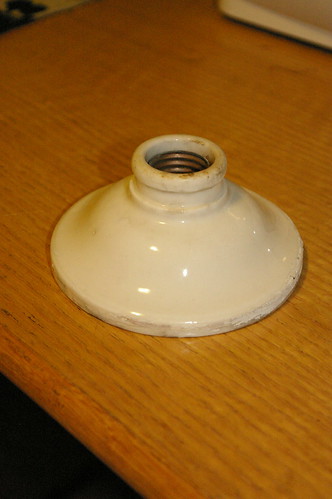
This was the light fixture in the shower. It is original to the house. We just removed it to replace it with a code-complaint fixture. Note the lack of mounting screws. Yes, it's held on by magic. Removing it intact was a challenge - after all, it is easy to remove things properly when you can find the hardware, but when you can't find the hardware to unscrew them...

It was held onto a mounting bracket by the two screws in the base of the socket. While this seems a slightly disconcerting way to attach it, the base and socket are as solid as ever at 85+ years old, so clearly it hasn't been a structural problem.
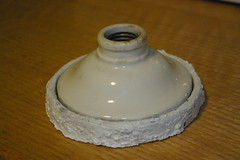
The fixture sat on this base, which would really look much better if not for the layers of paint and popcorn. I'm not terribly fond of the base, preferring the clean lines of the fixture without it, but I assume that it helps to prevent moisture infiltration.
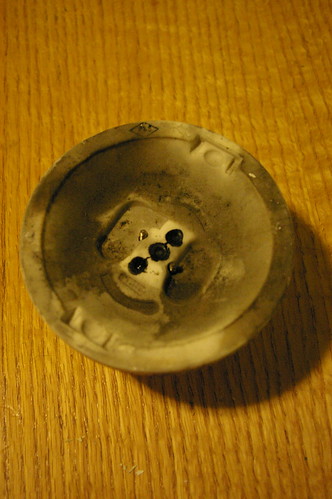
This is the underside of the fixture. Note that other than the two screws, it is completely sealed. With a bit of caulk, it could probably be completely sealed.
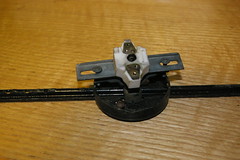
This is the rest of the light fixture, which the base screwed into. The strap ran between two joists to support it. The electrical connection was not made in the ceiling box, which is too small to fit much of anything, but rather in the extensive free air space above it, as was common at the time.
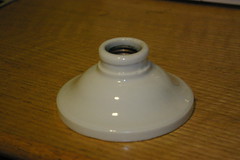
Finally, here is the fixture after I cleaned it up. Again, I'm really quite pleased with its clean lines. I love the lack of visible hardware, and am actively looking for more fixtures like it. I wonder if a shade clipped onto it, or if that was just the style.
The Electrical Outlet of Death™ is at the edge of the sink in the non-master bathroom, which, conveniently, is also the edge of the shower. An electrical outlet in a shower doesn't seem like a very good idea to me. When we eventually upgrade our electrical system, I'm going to put a GFCI breaker on that circuit so I don't have to replace the gorgeous original outlet cover with a hideous GFCI one.
